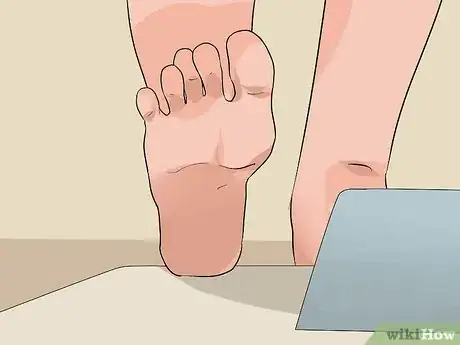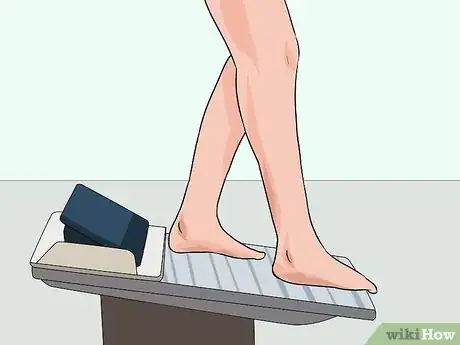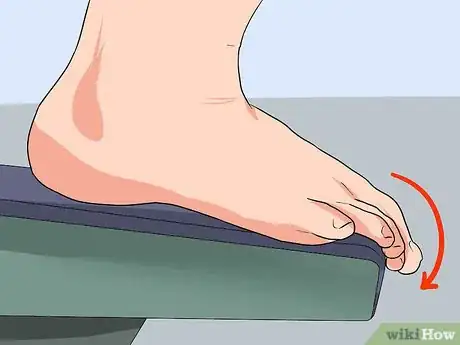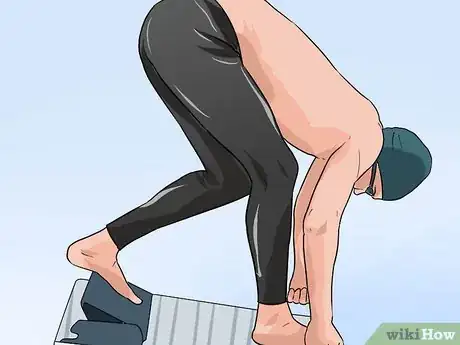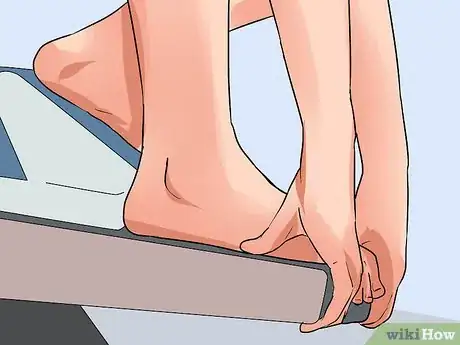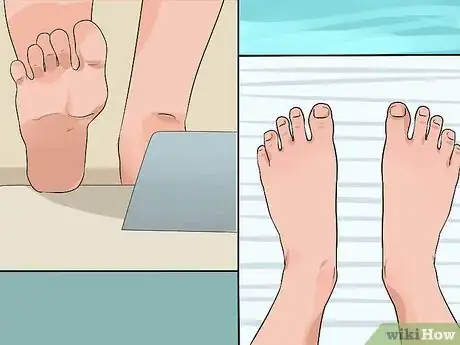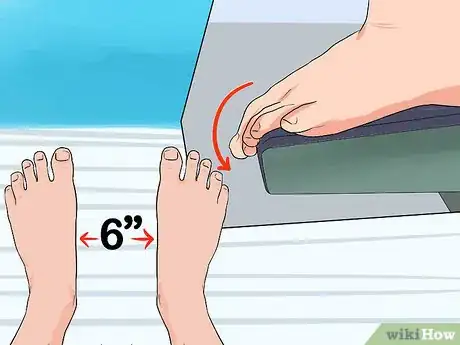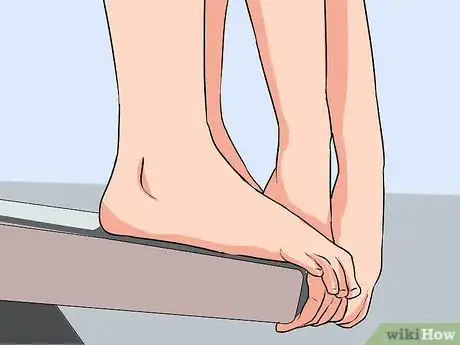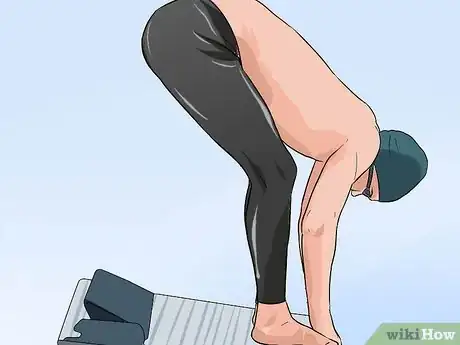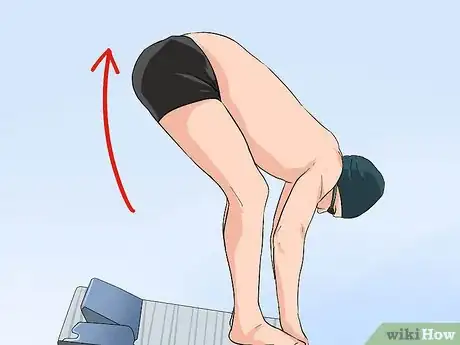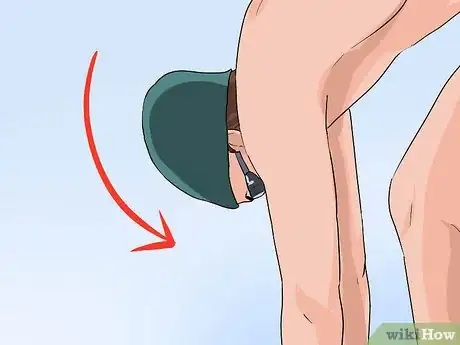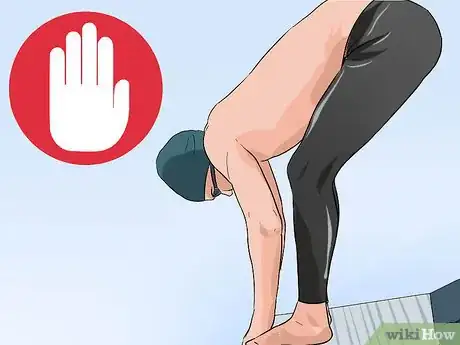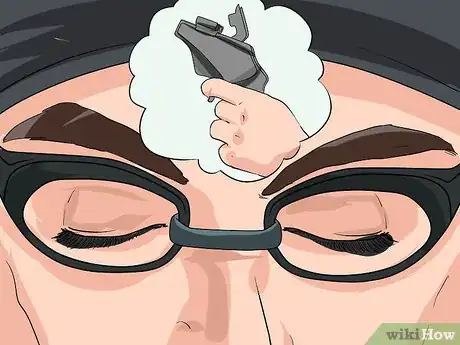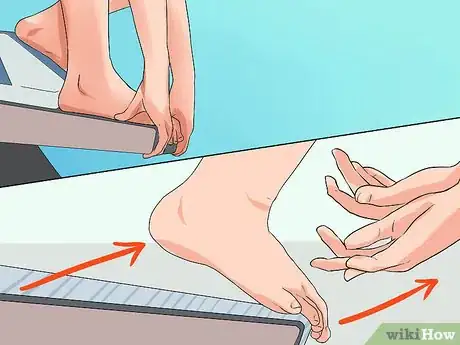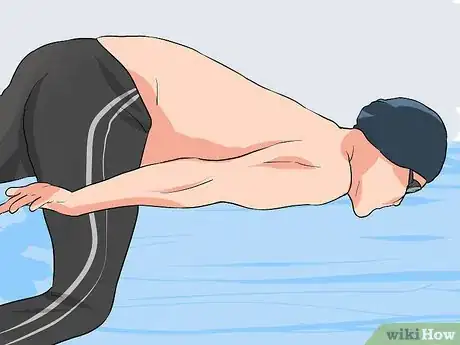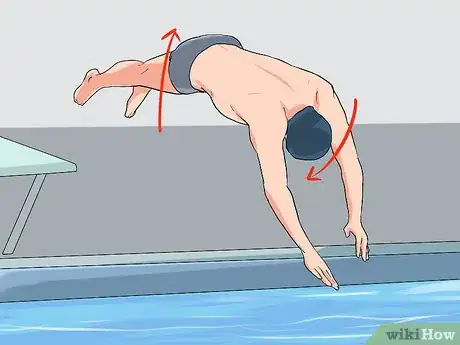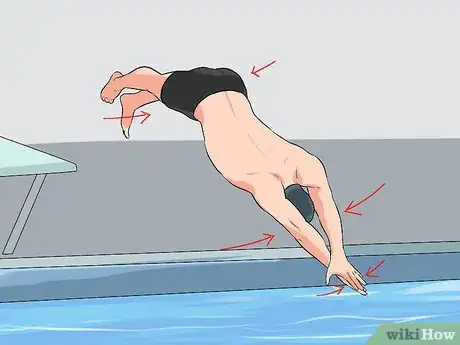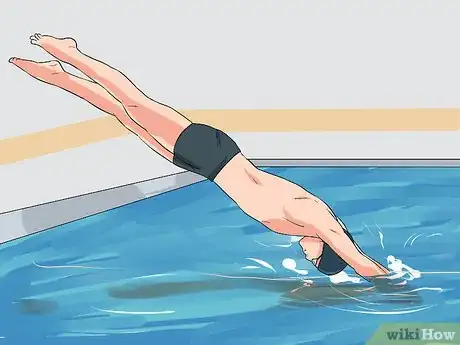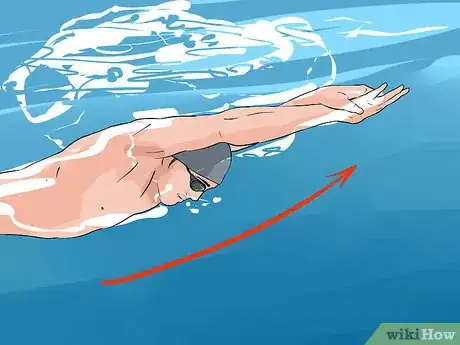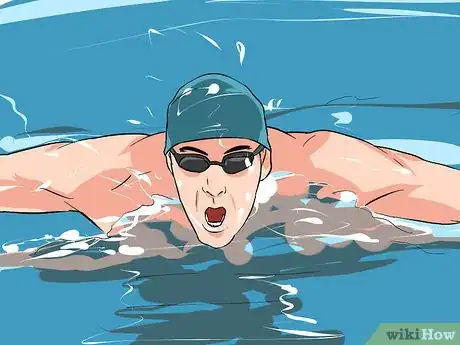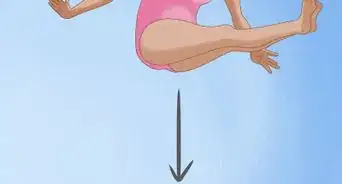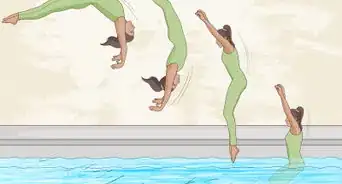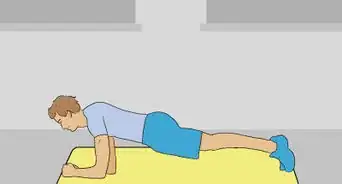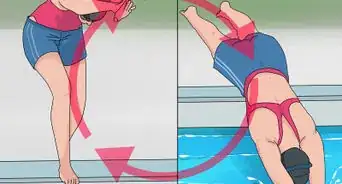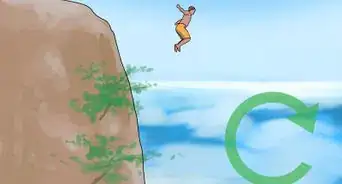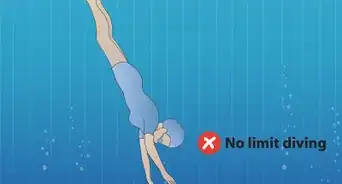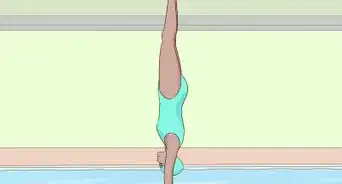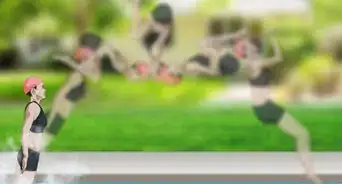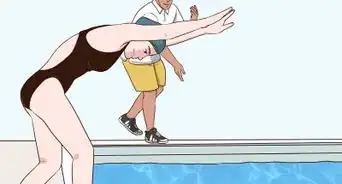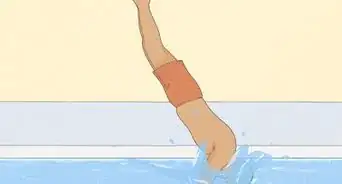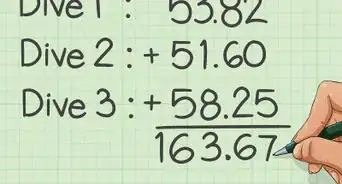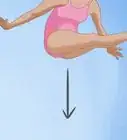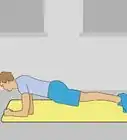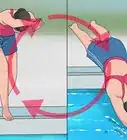This article was co-authored by wikiHow staff writer, Amber Crain. Amber Crain has been a member of wikiHow’s writing staff for the last six years. She graduated from the University of Houston where she majored in Classical Studies and minored in Painting. Before coming to wikiHow, she worked in a variety of industries including marketing, education, and music journalism. She's been a radio DJ for 10+ years and currently DJs a biweekly music program on the award-winning internet radio station DKFM. Her work at wikiHow supports her lifelong passion for learning and her belief that knowledge belongs to anyone who desires to seek it.
wikiHow marks an article as reader-approved once it receives enough positive feedback. In this case, several readers have written to tell us that this article was helpful to them, earning it our reader-approved status.
This article has been viewed 210,661 times.
Learn more...
In competitive swimming, a good dive off the starting block is a crucial part of the race. During your start you will be generating more velocity than at any other point, so it’s imperative that you learn to harness that velocity and use it to your advantage. Even though your dive off the starting block only takes a few seconds, mastering the skill is a vital part of winning the rest of the race.
Steps
Using the Track Starting Position
-
1Step carefully onto the starting block. You will be facing the pool, with both of your feet facing forward. Quickly assess and acquaint yourself with the feel of the block. Make sure you feel completely steady before continuing.
-
2Place one foot in front of the other. It is often recommended that you put your strong leg in the back position, with toes facing straight ahead. However, try experimenting to see which leg forward works best for you.
- Regardless of which leg you lead with, make sure your feet are approximately a shoulder width apart on the block.
Advertisement -
3Curl the toes on your forward leg over the edge of the block. By curling your toes over the edge, you will be able to push off the block with maximum force. Make sure your weight is distributed evenly between your front and back legs to ensure your stability.[1]
-
4Crouch down and tuck your head close to your knees. Make sure your head is down, with your chin resting on your chest, and positioned directly between your knees. Keep your forward knee positioned directly over your toes and your hips positioned directly over your heels.
- This will help to ensure your center of gravity is positioned at the edge of the block, resulting in the fastest reaction time.
-
5Stretch your arms forward and grab the front of the block. Use both hands to grasp it. You will have one hand positioned on each side of your forward leg. Grasp the block with all of your fingers and your thumbs, which will help you generate the most force.
- You can rest your thumbs on the top of the block or wrap them in front of it, whichever you prefer.
- To generate the most power, it is often recommended that you wrap your thumbs in front.[2]
Using the Grab Starting Position
-
1Step carefully onto the block. Keep both of your feet facing forward, with your entire body facing the pool. Do a quick assessment of the block and get acquainted with the feel of it. Make sure that you feel completely stabilized before moving into the next position.
-
2Stand on the block and curl your toes over the edge of the block. You should place your feet approximately 6 inches apart. Make sure your weight is evenly distributed between your two legs to ensure your stability. Keep your knees slightly bent.
-
3Stretch your arms forward and grab the front edge of the block. You can place your hands inside or outside of your feet, whichever is most comfortable for you. You should be leaning forward slightly.
-
4Keep your head positioned between your knees. You want your head tucked as close to them as possible. Your chin should be resting on your chest. You are now in a position of dynamic stability, with your center of gravity allowing you to move forward as rapidly as possible.[3]
Finalizing Your Starting Position
-
1Lift your hips. Both the track start and the grab start require that you lift your hips as high as you can for best results. Position them as close to the edge of the block as you can.
- Essentially, your rear should be situated as high in the air as possible.
- Doing this, along with tucking your head close to your knees, will help you position your center of gravity and give you the best advantage for a fast reaction time.
-
2Position your head so that it’s down and looking slightly backward. This will help you keep your goggles on after you hit the water. Losing your swimming goggles during a race can completely throw you off.
-
3Get into position and be as still as possible. The race will not be started until all of the competitors are ready, completely still and in starting position.
- Taking too long to get in a ready position or falling from the block before the official start can result in disqualification.
-
4Close your eyes and wait for the sound of the start beeper or pistol. Closing your eyes while waiting for the beeper is often recommended because it will result in a faster reaction time. By closing your eyes and focusing on the sound of the beeper, you are removing one of your senses causing the other one to be slightly heightened.
- This will increase your reaction time to the sound of the beeper.[4]
- When practicing, work on increasing your reaction time to the sound of the actual beeper. Practicing will help you to truly develop this skill.
Pushing Off
-
1Push off with your hands and legs simultaneously. Pushing off with your hands will tilt your body in the ideal position to thrust with your legs. You want to “explode” upward and outward with your feet and legs when you push off, since you need to generate as much force as possible.
- Just as your feet are leaving the block, use your curled toes to give yourself a final push to propel you forward and downward into the water.
-
2Throw your arms forward into the streamline position as you push off. Use the momentum you create by pushing off with your hands to throw your arms forward into this position.
- Ideally, you want to be able to “explode” from a bent body position into a streamlined body position in about 1.5 seconds.[5]
- Look up slightly as you push off. This will force your body to follow the direction of your head.
-
3Tuck your head down and push your hips up. You need to do this as soon as your feet leave the block. You want to dive forward with your head between your arms, looking slightly backward. This will get your body moving downward into the water. It will also help you keep your goggles on once you make impact.
Making Impact
-
1Maintain the streamlined position after push off. As soon as you push off you will be snapping quickly into the full streamline position. Maintain this position before entering the water by locking all of your major joints - ankles, knees, hips, wrists, elbows, shoulders and neck.[6]
- Hook your thumbs together to keep your arms in the streamlined position once you hit the water.
-
2Remain in the streamlined position when you hit the water. Upon impact you should have your feet close together, toes pointed, buttocks tight, chin resting on your chest, eyes looking downward and your arms locked straight behind your ears.
-
3Lift your hands and head slightly after you hit the water. You will still be holding the “hands on” streamlined position until you are just about to resurface and begin swimming.
-
4Blast to the surface and start swimming. As soon as you hit the surface go from the streamlined position right into your swimming stroke. The momentum you’ve built up will make your first few strokes strong and powerful.
Community Q&A
-
QuestionHow do I keep from doing a belly flop?
 Community AnswerTry to dive diagonally into the water. Pretend you are reaching for something in between the water surface and the bottom of the pool.
Community AnswerTry to dive diagonally into the water. Pretend you are reaching for something in between the water surface and the bottom of the pool. -
QuestionHow can I keep my goggles from falling off when I dive?
 Community AnswerRather than looking at where you're going to land in the water, keep your chin against your chest. This will keep the force from the impact from ripping your goggles away from your face, and it will also keep from injuring your face.
Community AnswerRather than looking at where you're going to land in the water, keep your chin against your chest. This will keep the force from the impact from ripping your goggles away from your face, and it will also keep from injuring your face. -
QuestionHow do I stop myself from bending at the knee just before entering the water?
 Community AnswerPush off harder with your back leg and when you're higher in the air, straighten out both legs and put your head down.
Community AnswerPush off harder with your back leg and when you're higher in the air, straighten out both legs and put your head down.
References
- ↑ http://breakingmuscle.com/swimming/the-swim-start-how-to-create-explosiveness-off-the-blocks
- ↑ http://breakingmuscle.com/swimming/the-swim-start-how-to-create-explosiveness-off-the-blocks
- ↑ http://www.humankinetics.com/excerpts/excerpts/dive-starts
- ↑ http://www.usms.org/articles/articledisplay.php?aid=384
- ↑ http://www.usms.org/articles/articledisplay.php?aid=384
- ↑ http://www.usms.org/articles/articledisplay.php?aid=384
About This Article
After getting up on the starting block, find a comfortable stance with your weight equally distributed and your body facing directly ahead. Lean forward and grab the edge of the block with your hands while keeping your hips raised. When you dive, push off with both hands and feet to generate as much force as possible. Once you’ve left the block, assume a streamlined position with locked, outstretched limbs. As soon as you hit the water, you can go into your first stroke. To learn more about different starting positions, and how to quicken your dive time, read on!
